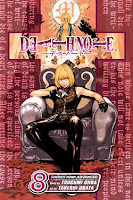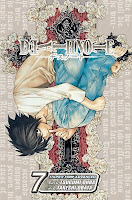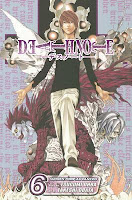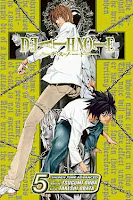Support manga, support your library!
Here’s what I’ve been reading:
Godchild, Volume 2 by Kaori Yuki. I’m pretty sure that Cain is supposed to be this angsty romantic figure, but so far I think he comes across as an ass most of the time. He does truly care about his half-sister and Riff, though. I also like the fact that he collects poisons—something that fascinate me. This volume loads on more Hargreaves family mystery but doesn’t really go anywhere yet. The introduction of Japanese characters in the first story of this volume seemed out of place to me. But, I do enjoy Yuki’s costume designs quite a bit.
Hana-Kimi: For You in Full Blossom, Volumes 16-17 by Hisaya Nakajo. I enjoyed this series much more than I was expecting to, but I must admit that it’s now starting to feel like it’s dragging on and on. These volumes return to one of the series roots: high-jumping. There’s less silly antics and more Sano family drama going on. I think I’m supposed to be worried about the developing love triangle between Sano, Ashiya, and Nakatsu but the intensity just isn’t there.
 Hikaru No Go, Volume 1, written by Yumi Hotta and illustrated by Takeshi Obata. I hardly know anything at all about Go (I should really fix that), but that didn’t stop me from thoroughly enjoying the first volume of Hikaru No Go. I know Obata’s work from Death Note and while the designs are definintely different here, the art is still excellent. Sai is very pretty and Hikaru is fairly adorable. Their interactions are fun to watch although the humor can be rather juvenile at times. Even from reading only the first volume I can understand how this series sparked a Go craze. Now, if only we could get some of those mahjong titles licensed…
Hikaru No Go, Volume 1, written by Yumi Hotta and illustrated by Takeshi Obata. I hardly know anything at all about Go (I should really fix that), but that didn’t stop me from thoroughly enjoying the first volume of Hikaru No Go. I know Obata’s work from Death Note and while the designs are definintely different here, the art is still excellent. Sai is very pretty and Hikaru is fairly adorable. Their interactions are fun to watch although the humor can be rather juvenile at times. Even from reading only the first volume I can understand how this series sparked a Go craze. Now, if only we could get some of those mahjong titles licensed…
 Skip Beat, Volume 2 by Yoshiki Nakamura. I don’t really care about show business, but the revenge plot is great and isn’t something I’ve seen much of in shōjo manga. This volume sees the creation of the somewhat bizarre “Love Me Section” which, as far as I can tell, Kyoko is the only member. The story gets a bit silly at times, but I love Kyoko’s over-the-top reactions, even when she manages to keep them in her head. She’s spunky and can be very enthusiastic to say the least.
Skip Beat, Volume 2 by Yoshiki Nakamura. I don’t really care about show business, but the revenge plot is great and isn’t something I’ve seen much of in shōjo manga. This volume sees the creation of the somewhat bizarre “Love Me Section” which, as far as I can tell, Kyoko is the only member. The story gets a bit silly at times, but I love Kyoko’s over-the-top reactions, even when she manages to keep them in her head. She’s spunky and can be very enthusiastic to say the least.




